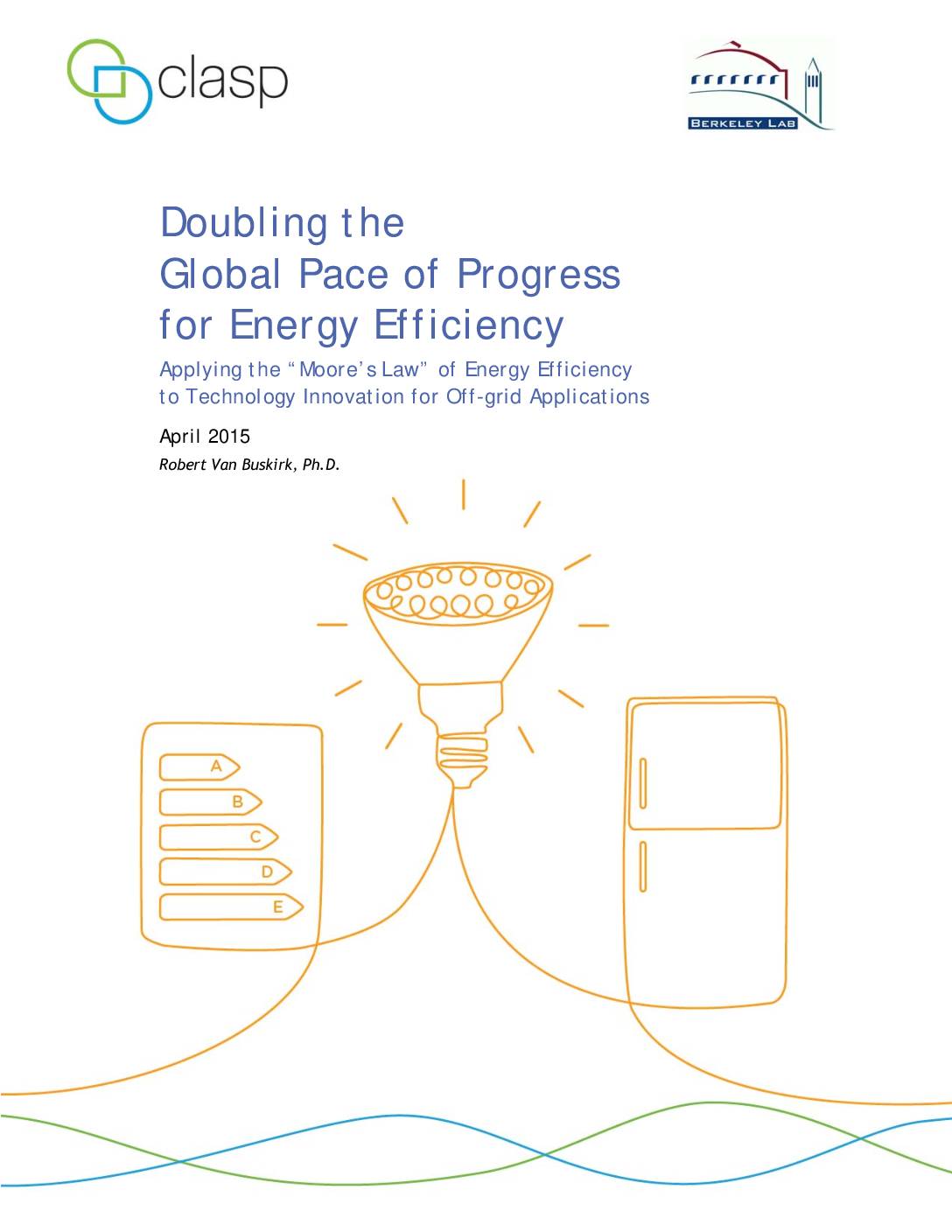This analysis identifies a path forward to accelerate the improvement of energy efficient technology and help increase modern electricity access for the global poor.
This study provides a quantitative estimate of efficiency improvement milestones that will need to be met in order to cost-effectively achieve the Sustainable Energy for All (SE4All) campaign’s goals of ensuring “universal access to modern energy services” and “doubling the global rate of improvement in energy efficiency” within the next decade.
The study shows that accelerating progress in energy efficiency will be critical to providing affordable access to modern energy services for the more than one billion people who currently lack access to electricity. Further, this study argues that innovation in the development of appliances for off-grid applications should lead to a major acceleration of energy efficiency improvement rates globally, potentially doubling the global rate of improvement in energy efficiency technology. This is due to the unique economics facing off-grid consumers and energy service providers.
For off-grid households in developing countries, the cost of electricity is extraordinarily high—from $0.30/kWh to $1 kWh, compared to $0.10/kWh to $0.36/kWh for grid-connected consumers—inspiring demand for cost-optimized, highly energy efficient appliances. Adding to this dynamic is the fact that in off-grid contexts, consumers are often very poor, and an off-grid energy system represents a significant outlay of income.
If billions of un- and under-electrified consumers throughout the developing world are going to receive electricity services through off-grid solar systems, a market for super-efficient appliances that meet energy service demands while minimizing energy supply costs will need to be developed.
As such, the unique economic pressures of the off-grid market promise to inspire appliance design that emphasizes energy efficiency. Enabling the growth of this market, and supporting it through targeted policy and research efforts, provides a “roadmap” for simultaneously realizing global energy access goals and increasing the rate of energy efficiency improvement.
Experience with other technology innovation processes indicates that pursuit of such accelerated and ambitious energy efficiency-improvement goals will need guidance in the form of long-term technology planning. Such planning may require policymakers, technologists, financial institutions, manufacturers, and suppliers to set expectations for efficiency milestones in different off-grid products, and then to create robust R&D and market programs to achieve these targets.
This report was produced for CLASP by Robert Van Buskirk of Lawrence Berkeley National Laboratory, with funding from the ClimateWorks Foundation. Jim McMahon reviewed a draft of this report and provided many helpful comments and suggestions.
Share this

Sectors: Cross cutting, Equipment and appliances, Power sector, Renewables
Country / Region: Global
Tags: electricity generation, energy, energy efficiency, energy services, innovation, technology innovationKnowledge Object: Publication / Report
Published by: CLASP
Publishing year: 2015
Author: Robert Van Buskirk
